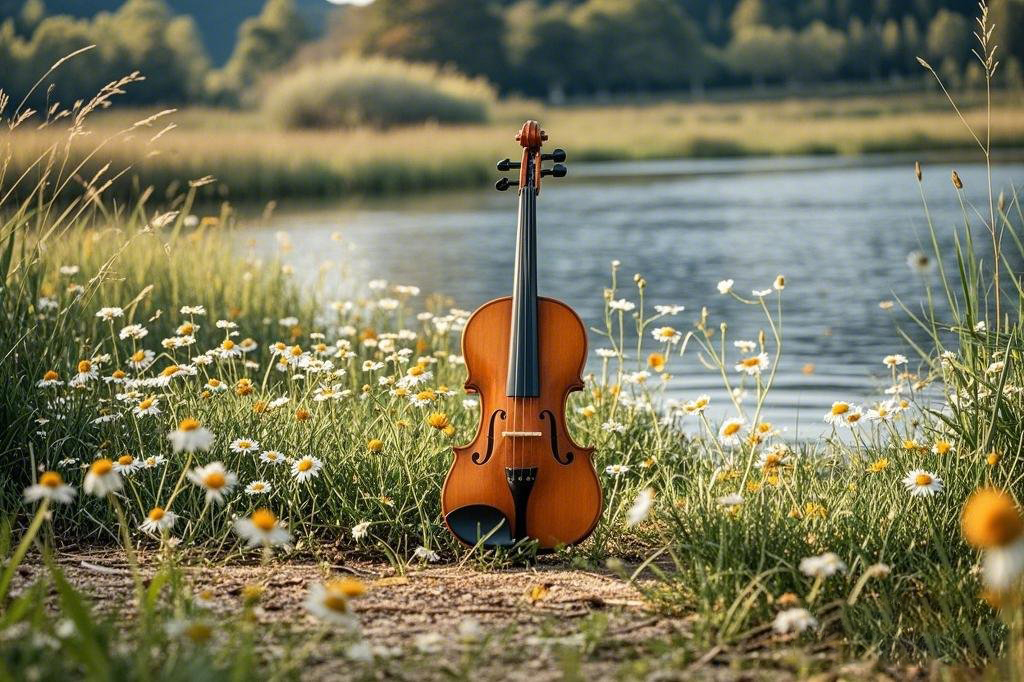Global Violin Education - Chinese Excellence
Shang Kun 2025-03-08 171
Global Violin Education: A Pathway to Chinese Excellence in MusicMusic is a universal language that transcends borders, and the violin, with its rich history and dynamic presence, is one of the most cherished instruments globally. However, in recent years, a remarkable trend has been emerging—an increasing focus on Global Violin Education through the lens of Chinese excellence. This trend is reshaping the way we perceive and cultivate talent on a global scale. But what makes this movement so significant? And how can it bring lasting change to the future of music education?
The Rise of Global Violin Education: China Leading the WayThe scene in the world of music education today is evolving rapidly. While Western classical traditions have long dominated violin training, a new force is emerging from the East—China. Over the last few decades, China has established itself as a powerhouse in the world of classical music, particularly in the violin discipline. Chinese violinists, educators, and institutions are not just making waves—they're setting new standards in both technique and performance.
But this rise isn’t without challenges. The global music education community has long operated within a framework built by Western institutions, and introducing a different approach to violin education raises several questions. Can Chinese methodologies truly blend with Western traditions? How can the two worlds of music come together without losing the unique qualities each brings to the table? And most importantly, how can these new educational frameworks help create a path for aspiring musicians worldwide to achieve greatness?
Breaking Barriers: A New Approach to Violin EducationThe clash between these two educational cultures—the Western classical tradition and the Chinese emphasis on excellence and rigorous discipline—presents a unique challenge. But rather than creating division, it has sparked a new movement that values the best of both worlds. Chinese excellence in violin education is not just about creating skilled performers; it's about fostering well-rounded musicians who can adapt to the evolving demands of the modern world. Whether it’s through innovative techniques, a deeper understanding of music theory, or enhanced performance practices, Chinese violin education is making its mark.
Yet, there’s more to this shift than meets the eye. Beyond the technical skills and rigorous practice regimes, there’s an underlying philosophy of teaching that emphasizes not just musical talent, but emotional intelligence, cultural integration, and global outreach. The incorporation of Chinese cultural values, such as patience, perseverance, and humility, has led to a generation of violinists who approach music with a sense of purpose and passion that is unique to their training.

The Road Ahead: Embracing the Future of Violin EducationNow, the key question remains: How can we ensure that this wave of Chinese excellence in violin education continues to thrive on a global scale? The answer lies in integrating Chinese methodologies into existing global music education frameworks without losing sight of the core principles that make music an art form. For educators, it’s not about a complete overhaul of systems—it’s about the fusion of Eastern and Western approaches to create a more comprehensive, effective, and engaging music education experience.
It’s also about creating opportunities for collaboration across cultures, which has already begun with international exchanges, masterclasses, and performance opportunities. By offering platforms where musicians from all over the world can learn from one another, we’re cultivating an environment of innovation and mutual respect that will carry the violin to new heights. Additionally, the rise of online learning platforms has democratized music education, enabling violinists from even the most remote parts of the world to access high-quality instruction based on both Western and Chinese excellence.
The Impact of Global Violin Education on the IndustryLet’s not forget the larger implications of this movement. As the influence of Chinese excellence spreads throughout the global violin community, the impact will be felt across the music industry. Music institutions will continue to refine their teaching methods, ensuring that future generations of violinists are equipped not only with technical prowess but also with the cultural sensitivity and adaptability needed to thrive in a rapidly changing world.
Moreover, as this educational model takes hold, the world of violin performance will see a diversification in styles, techniques, and interpretations that will reshape classical music for years to come. Performances will blend the deep-rooted traditions of both East and West, offering audiences a richer, more varied musical experience. Chinese violinists will continue to push boundaries, collaborating with international musicians and fostering cultural exchanges that will only deepen the global appreciation for the violin.
Why This Matters: A Global Future for Violin EducationUltimately, the future of violin education lies in embracing the best aspects of multiple traditions, and China’s contribution cannot be overlooked. By integrating Chinese excellence into global education systems, we’re not just developing better musicians—we’re nurturing a global community of violinists who will continue to elevate the art form for generations to come.
So, what’s the bottom line here? The rise of Chinese excellence in violin education represents a shift in how we approach learning and performance on a global scale. By bridging the gap between Eastern and Western traditions, we’re paving the way for a more dynamic, diverse, and inclusive future in the world of violin music.
This global collaboration will ensure that the violin, as a timeless instrument, continues to captivate and inspire audiences worldwide, creating a future where excellence knows no borders.
